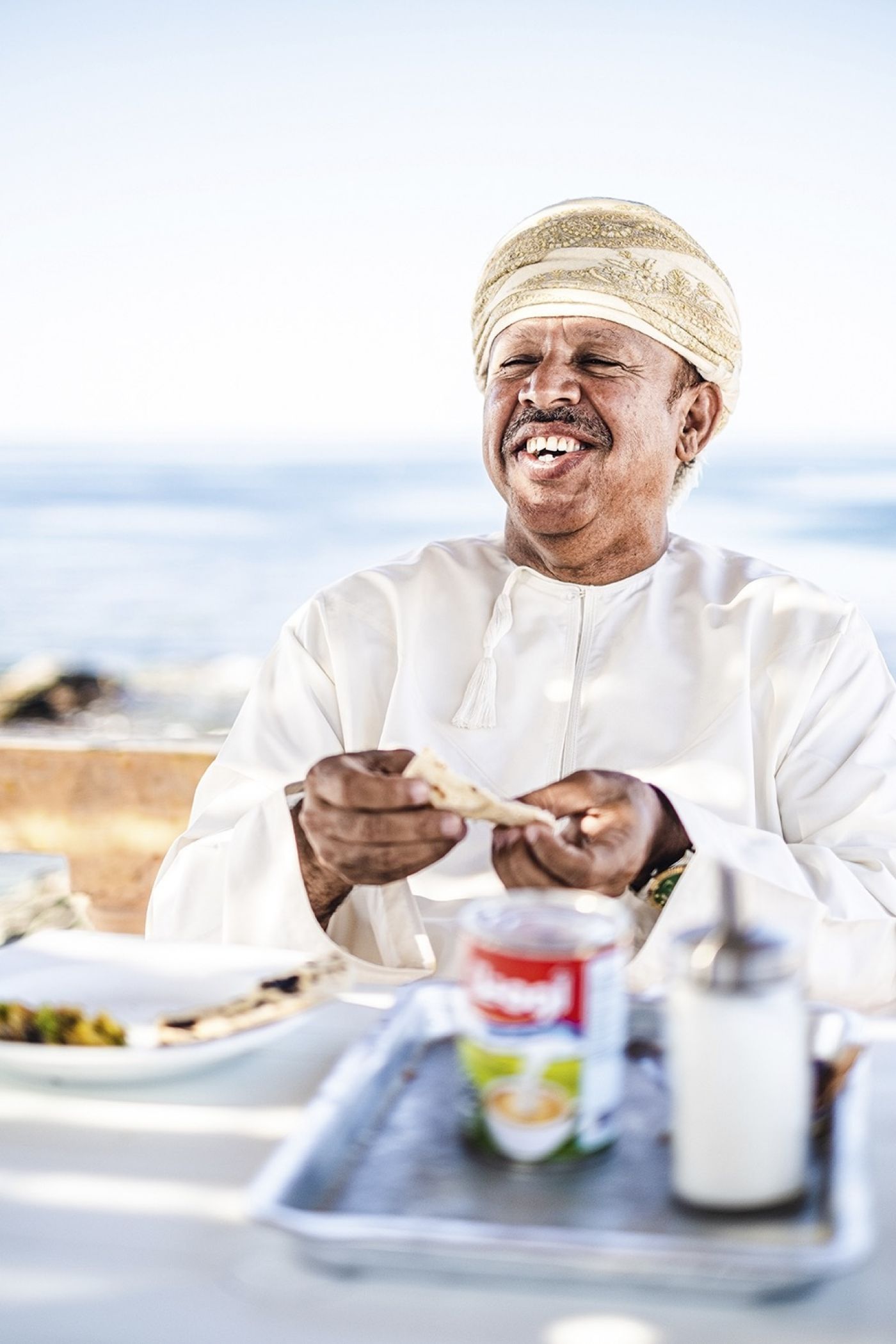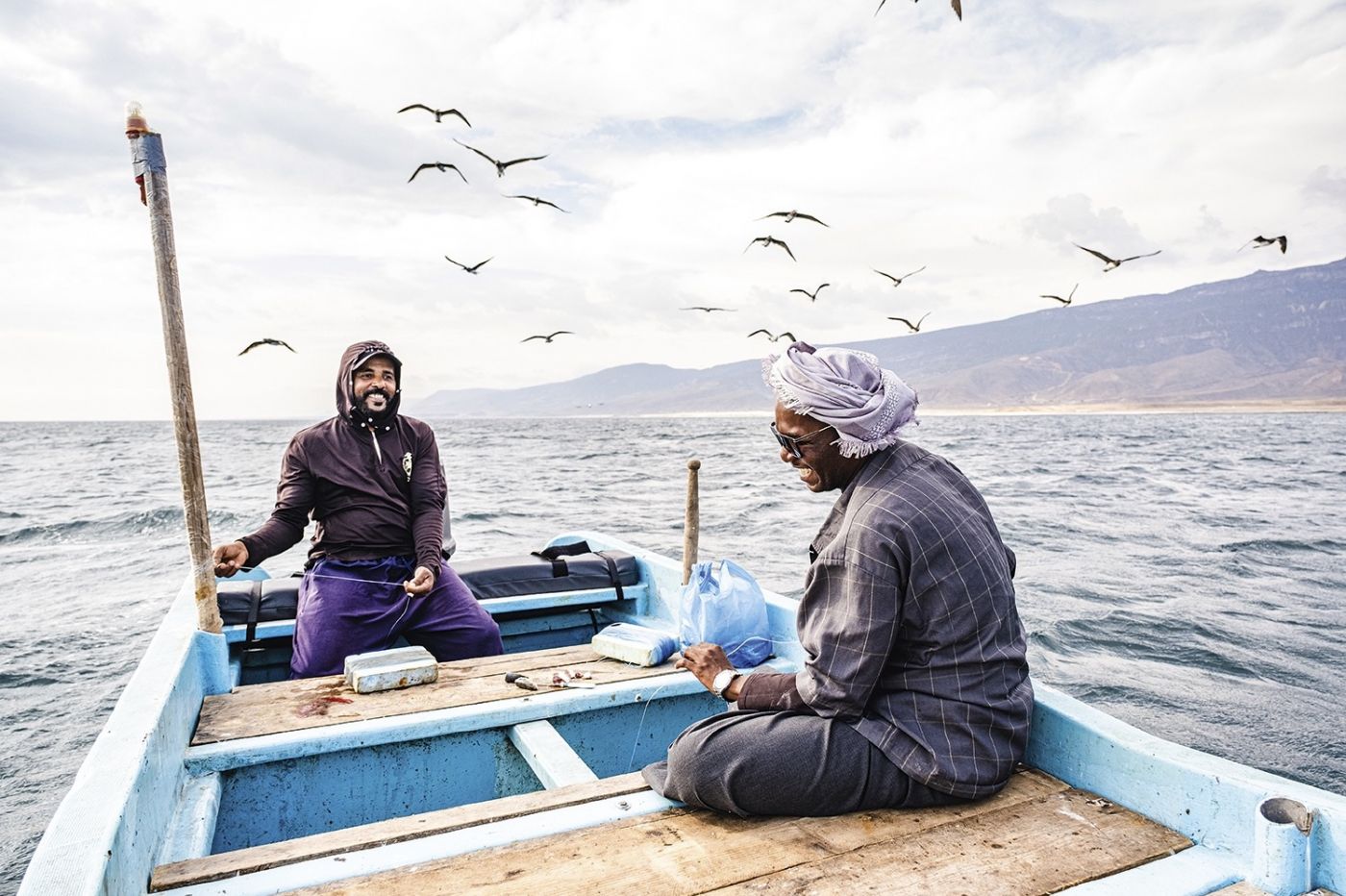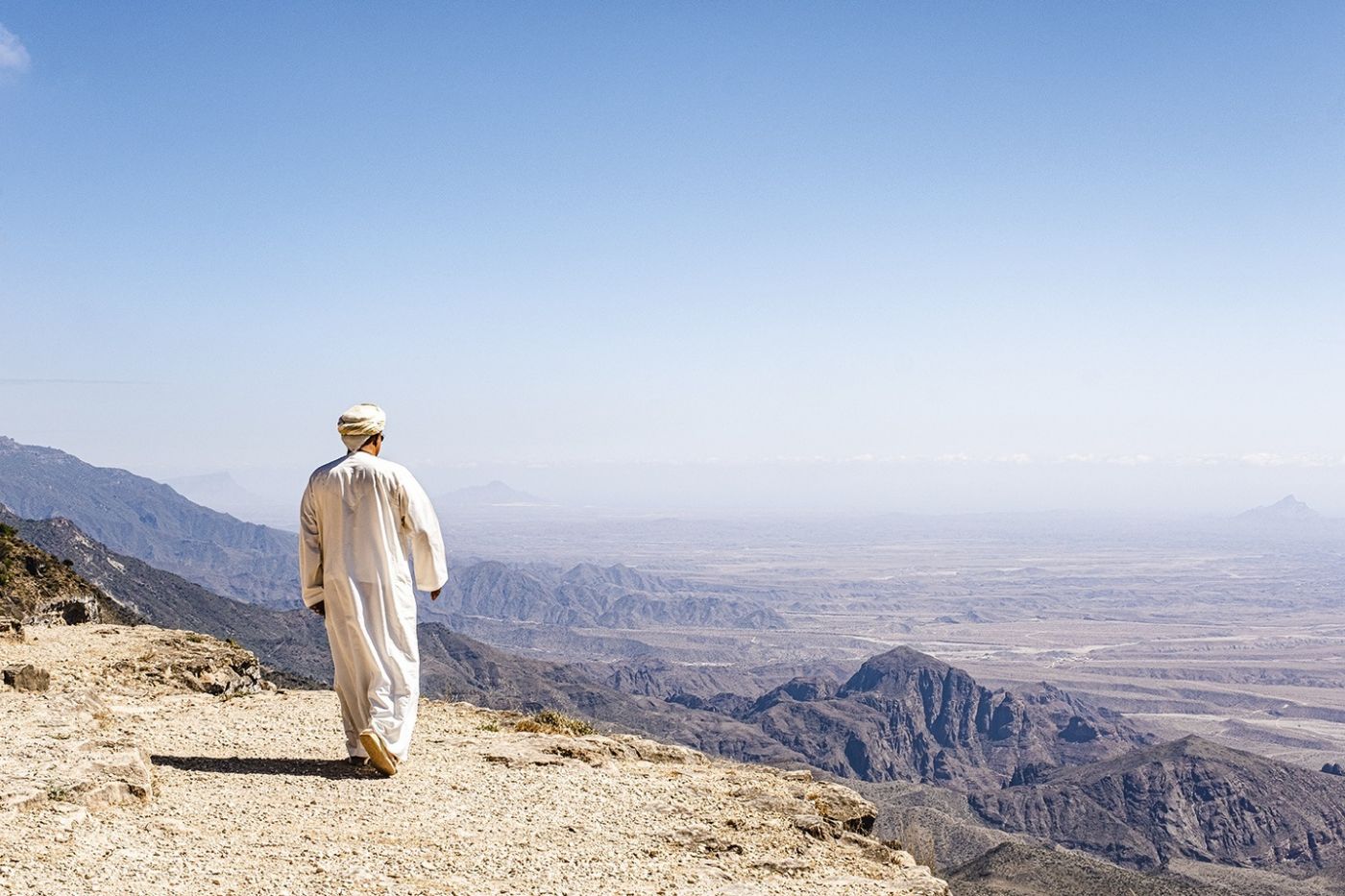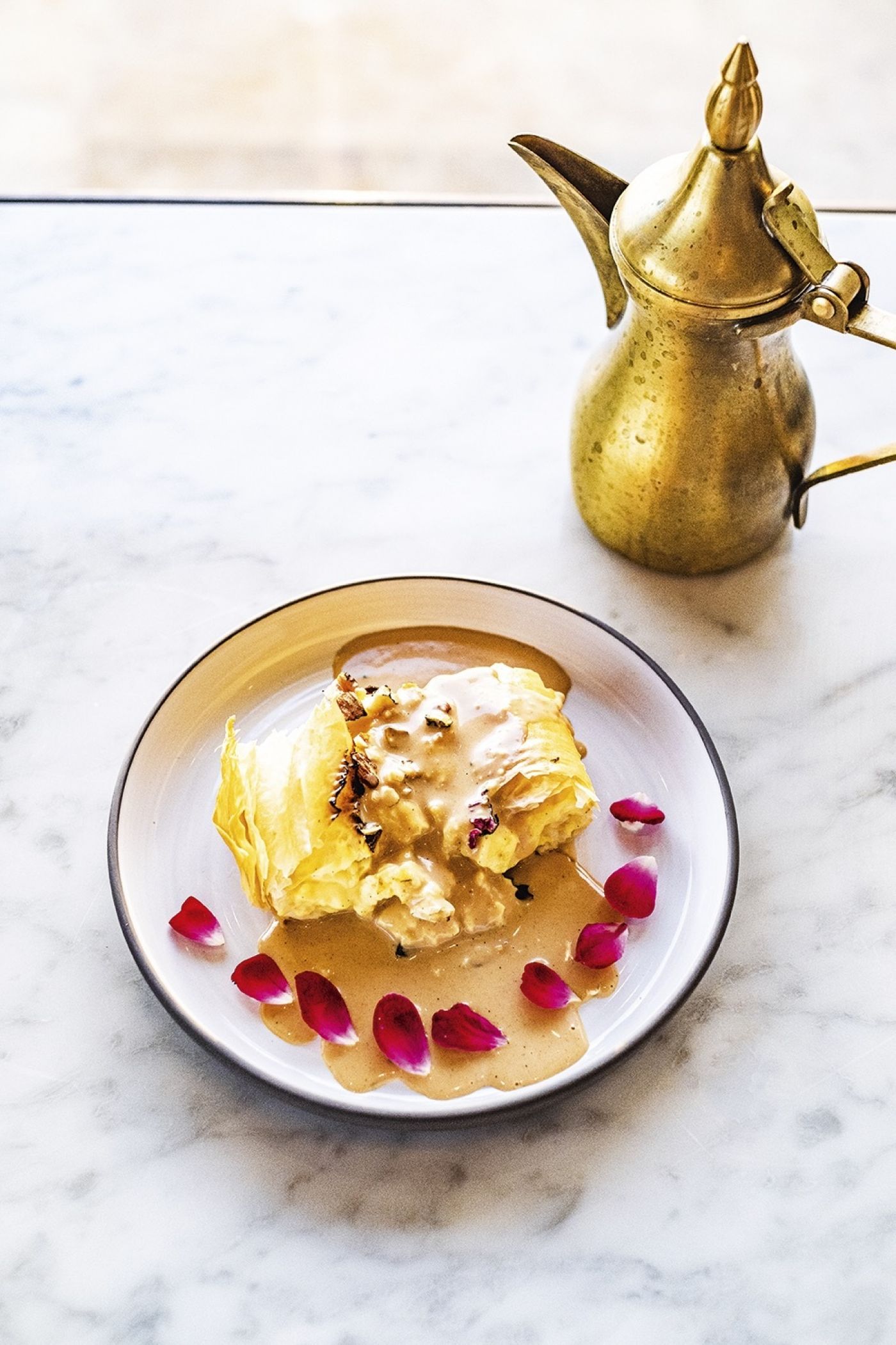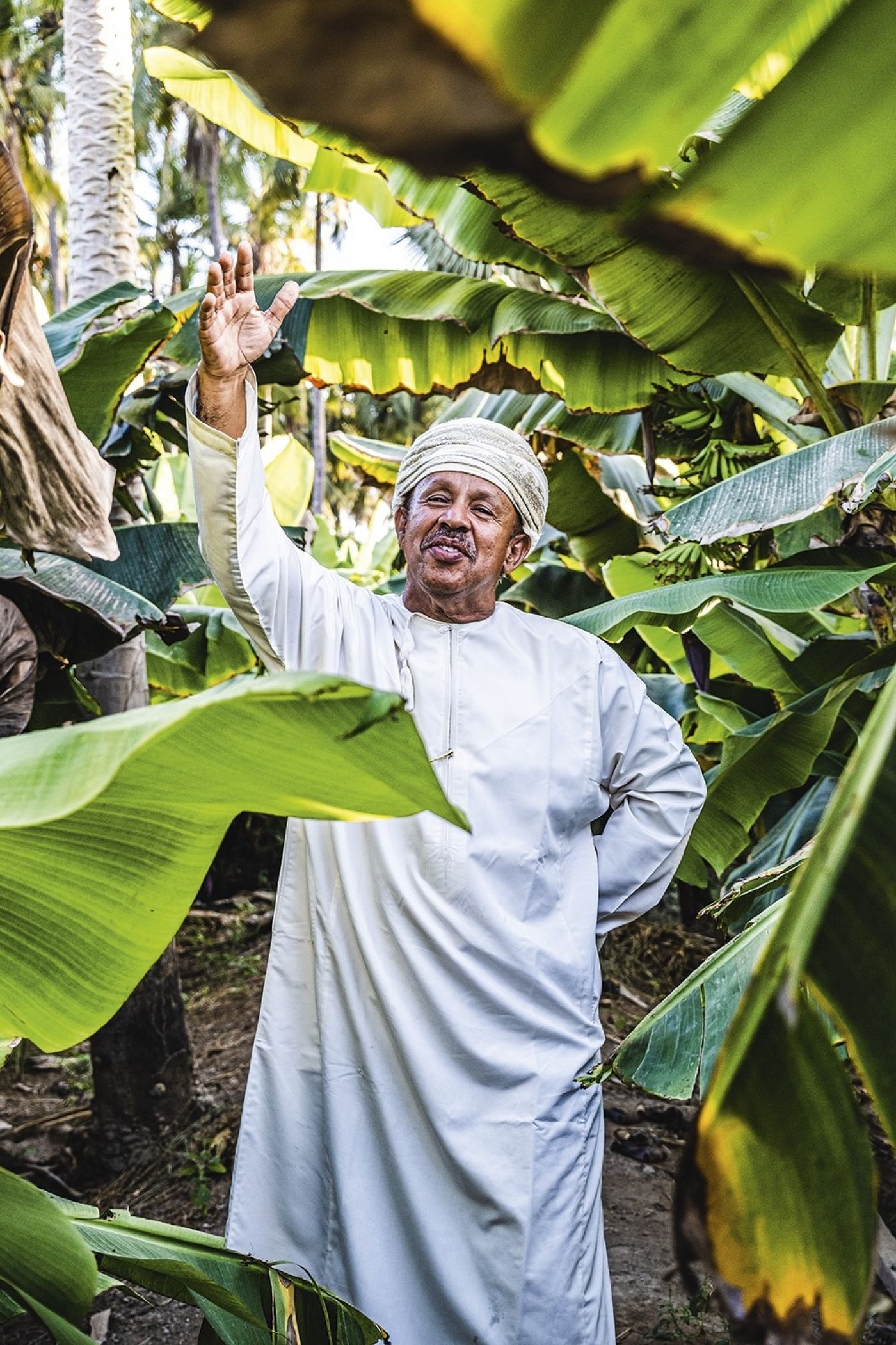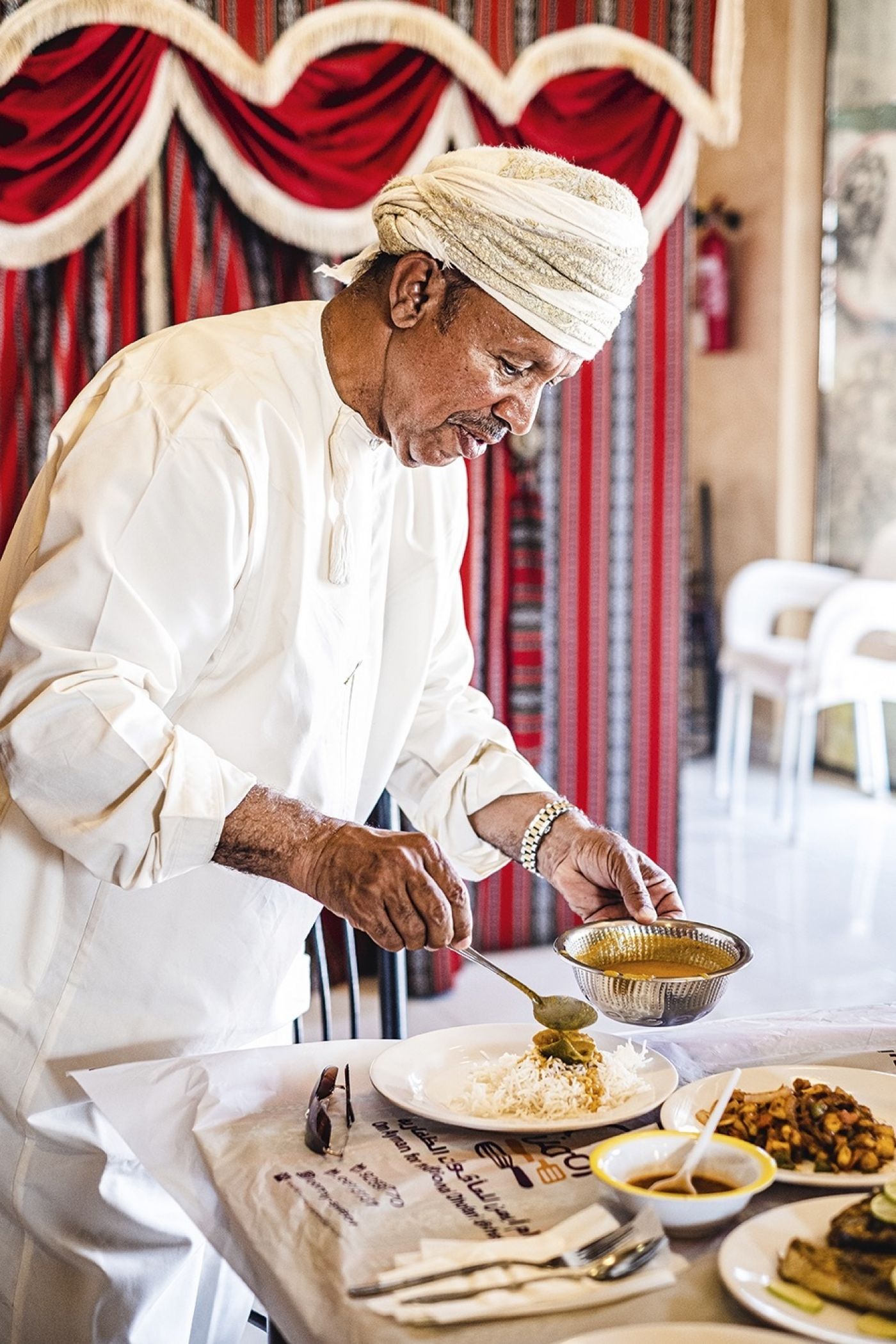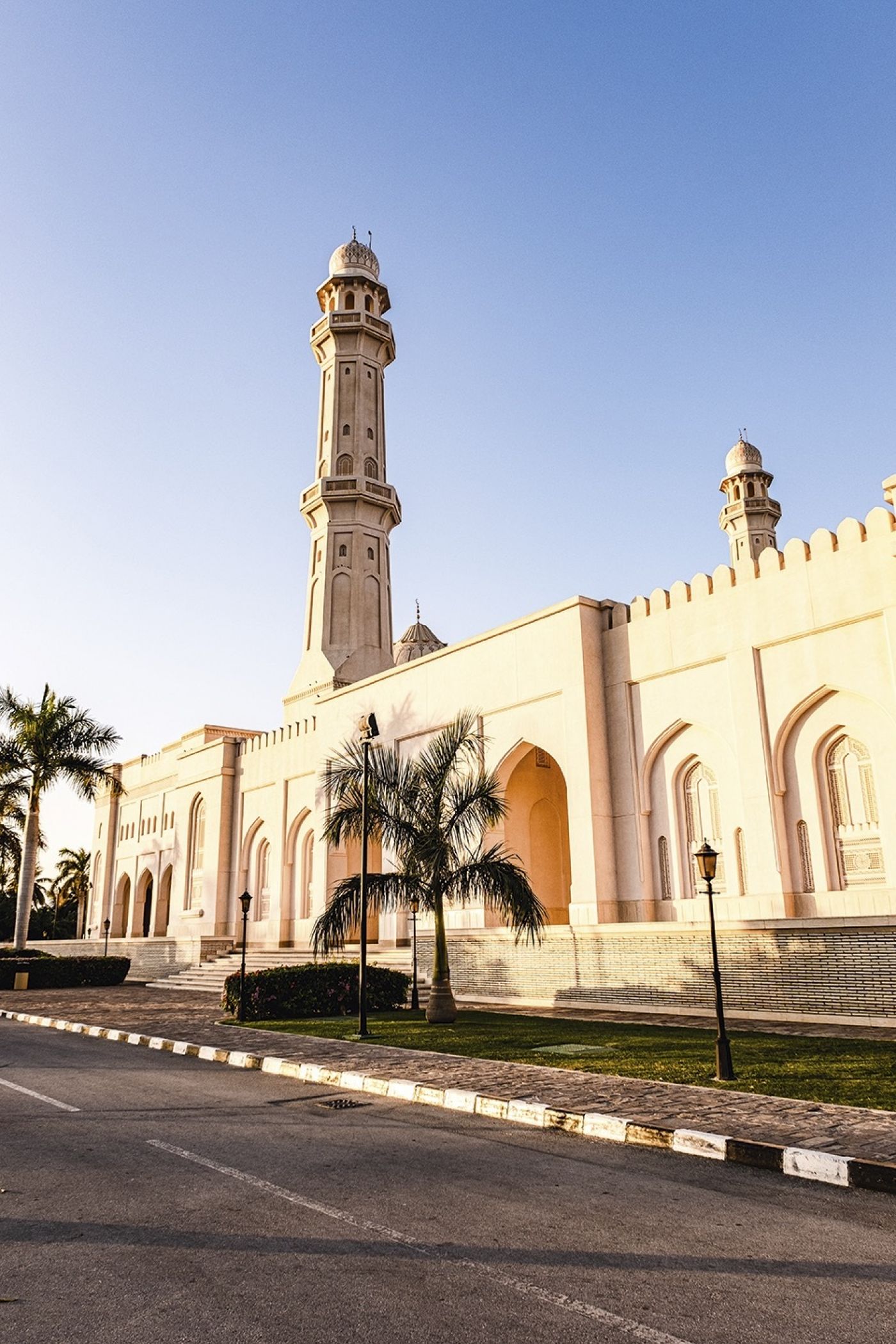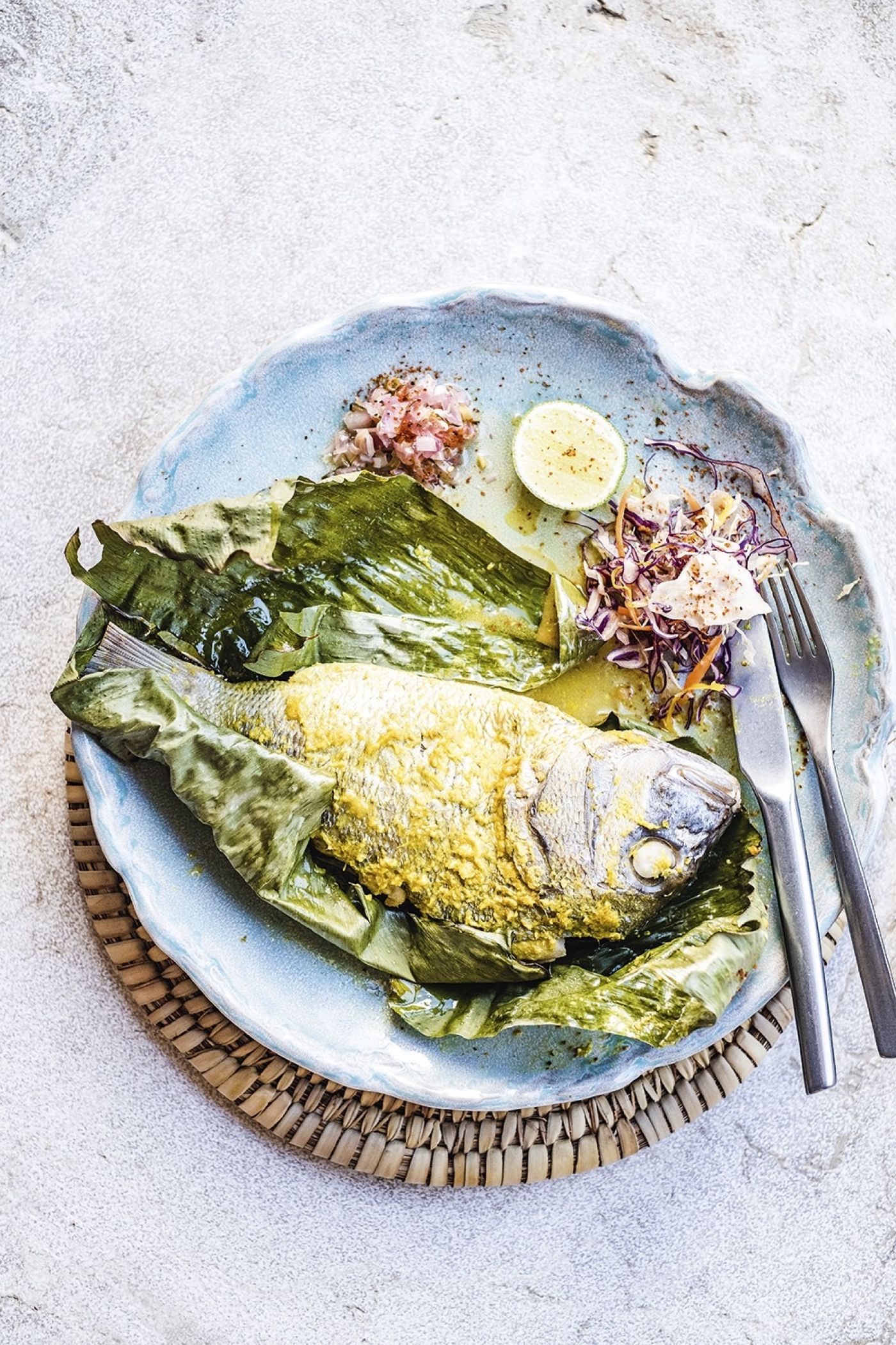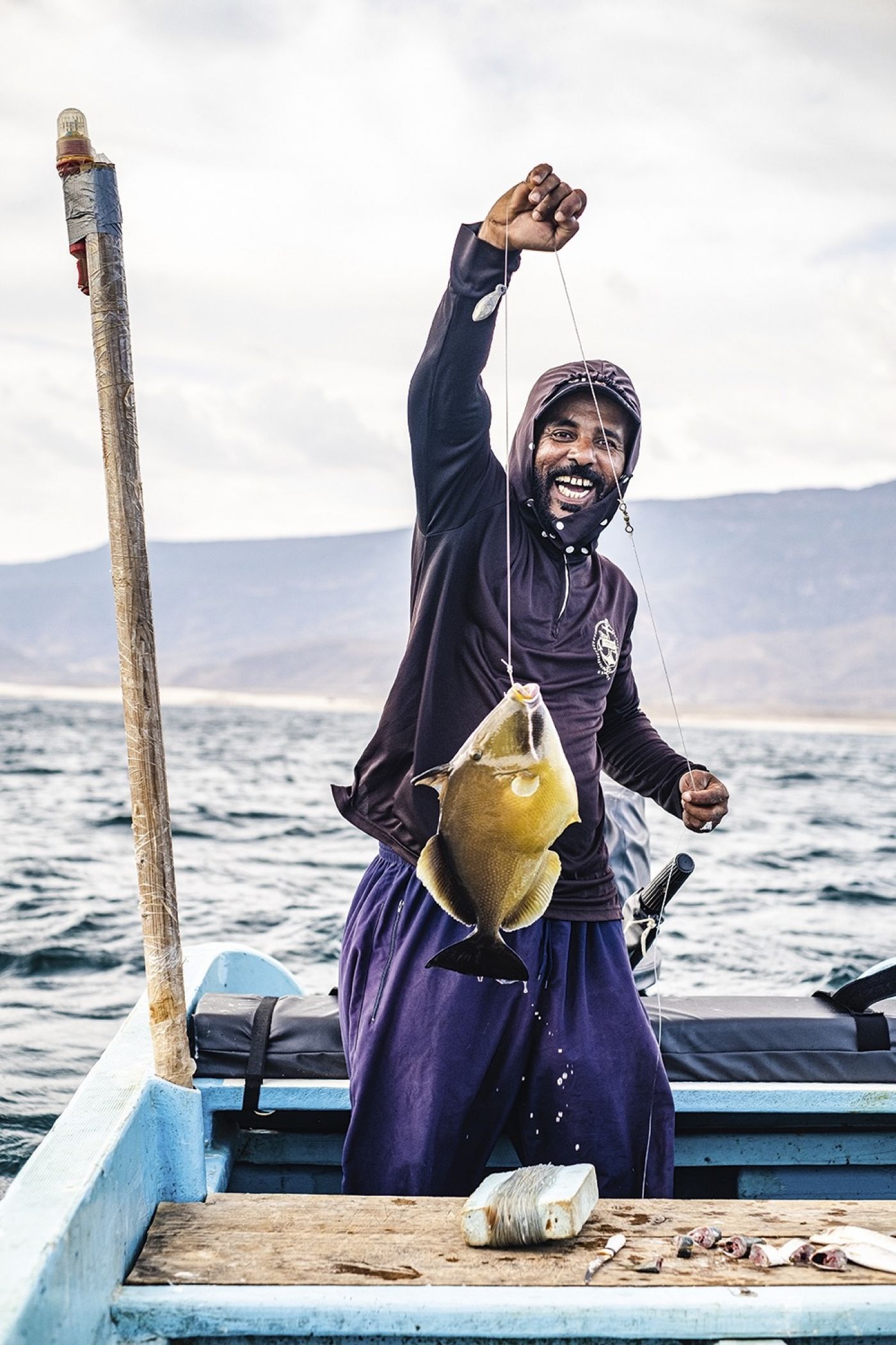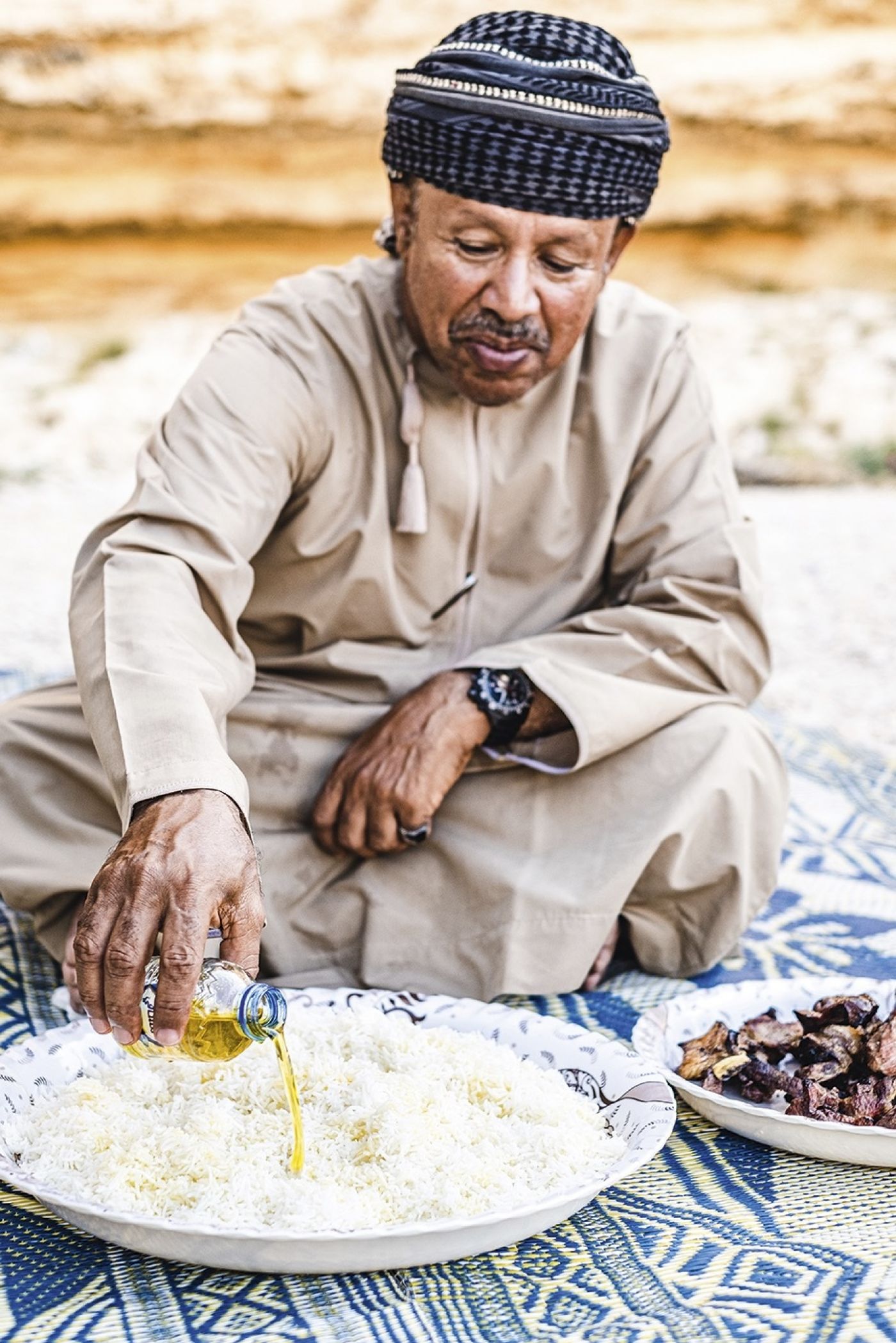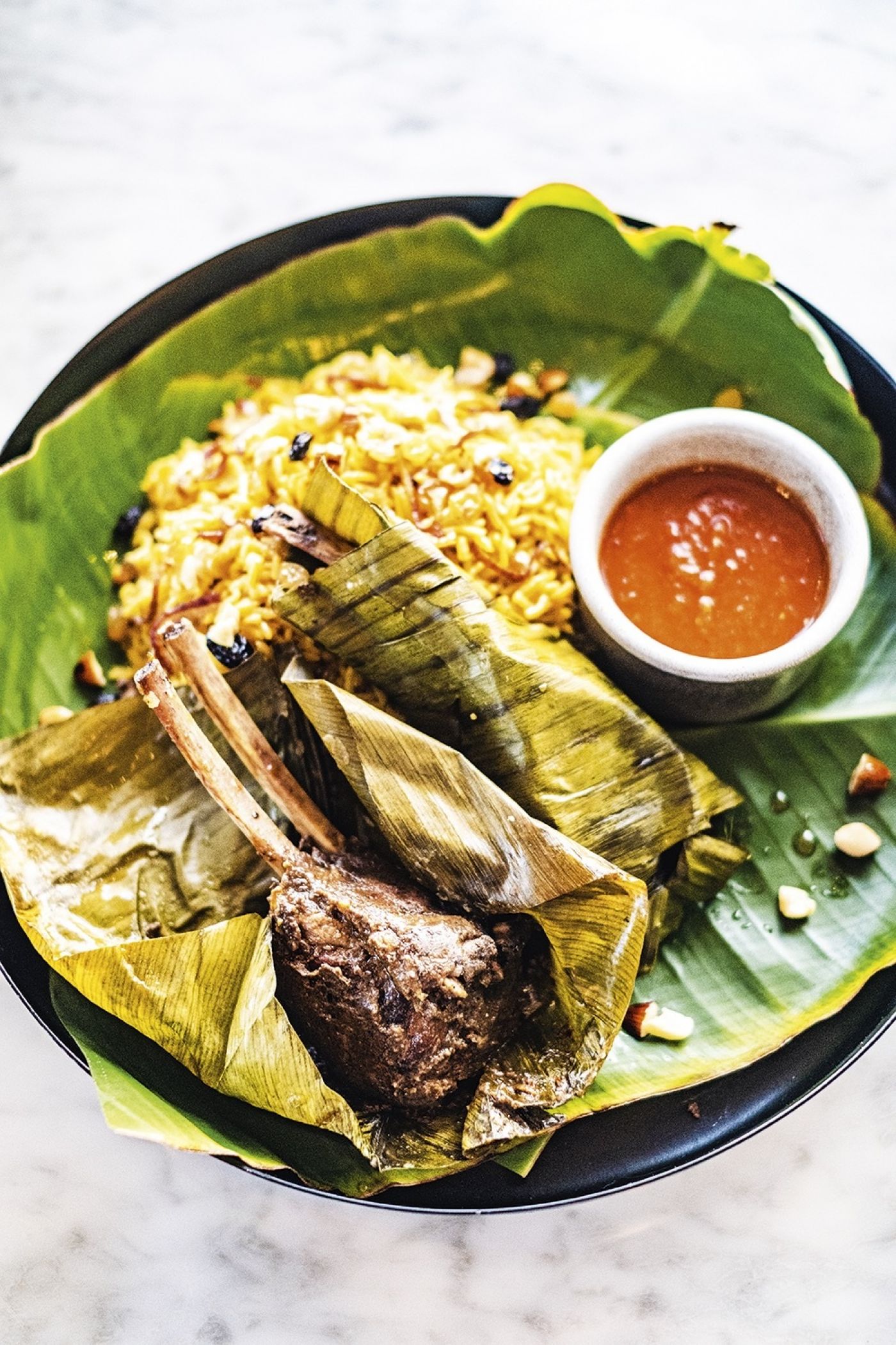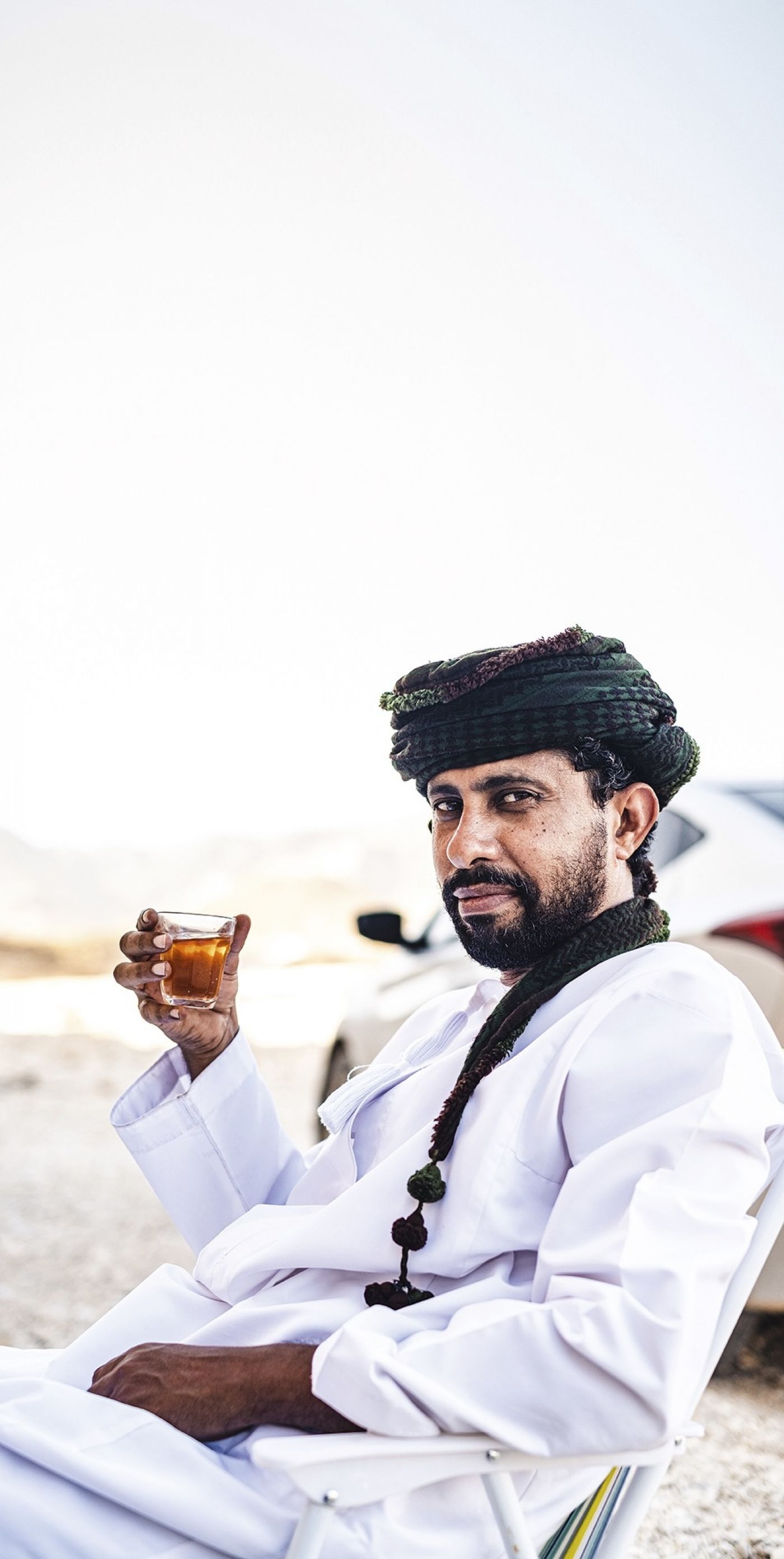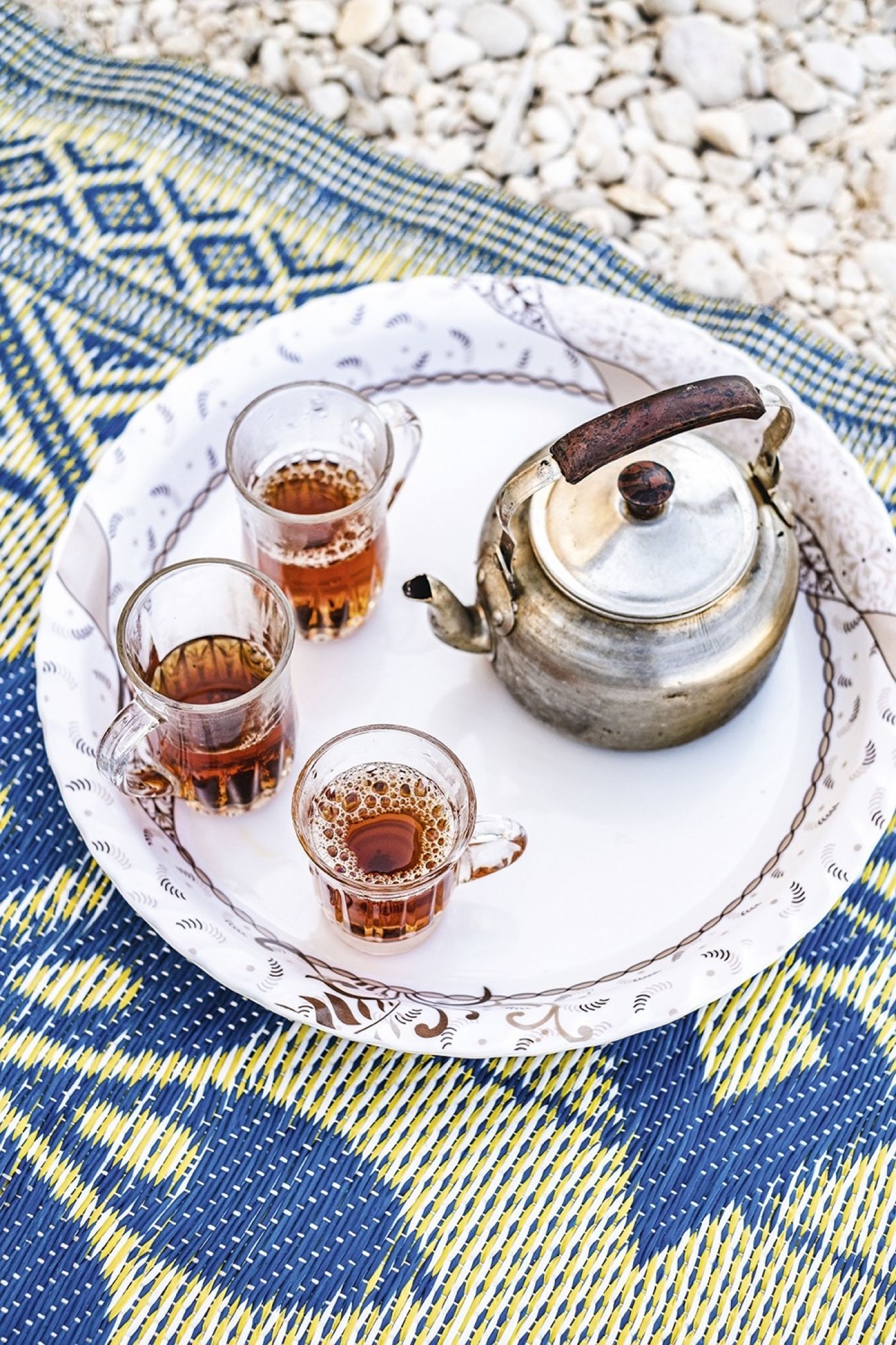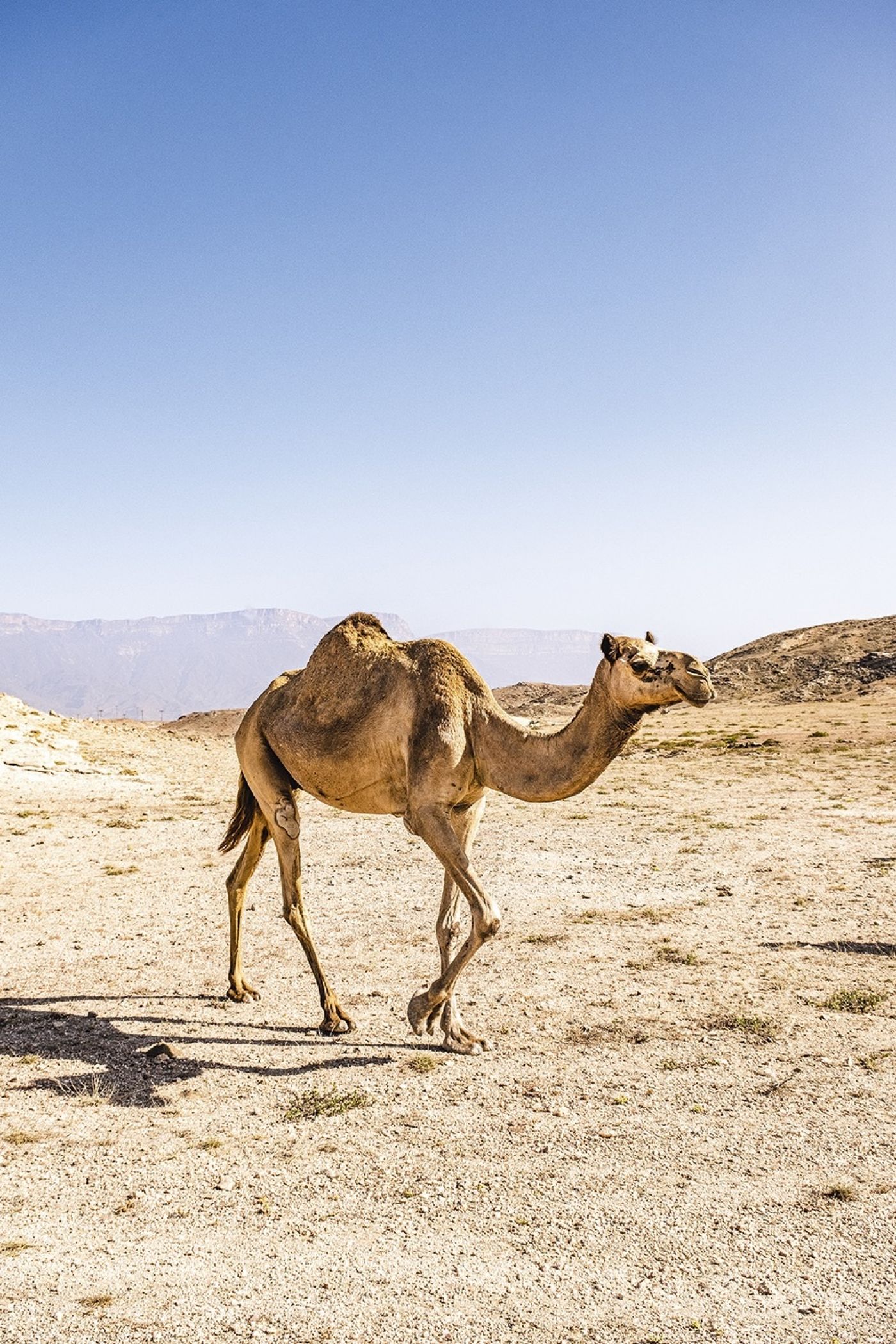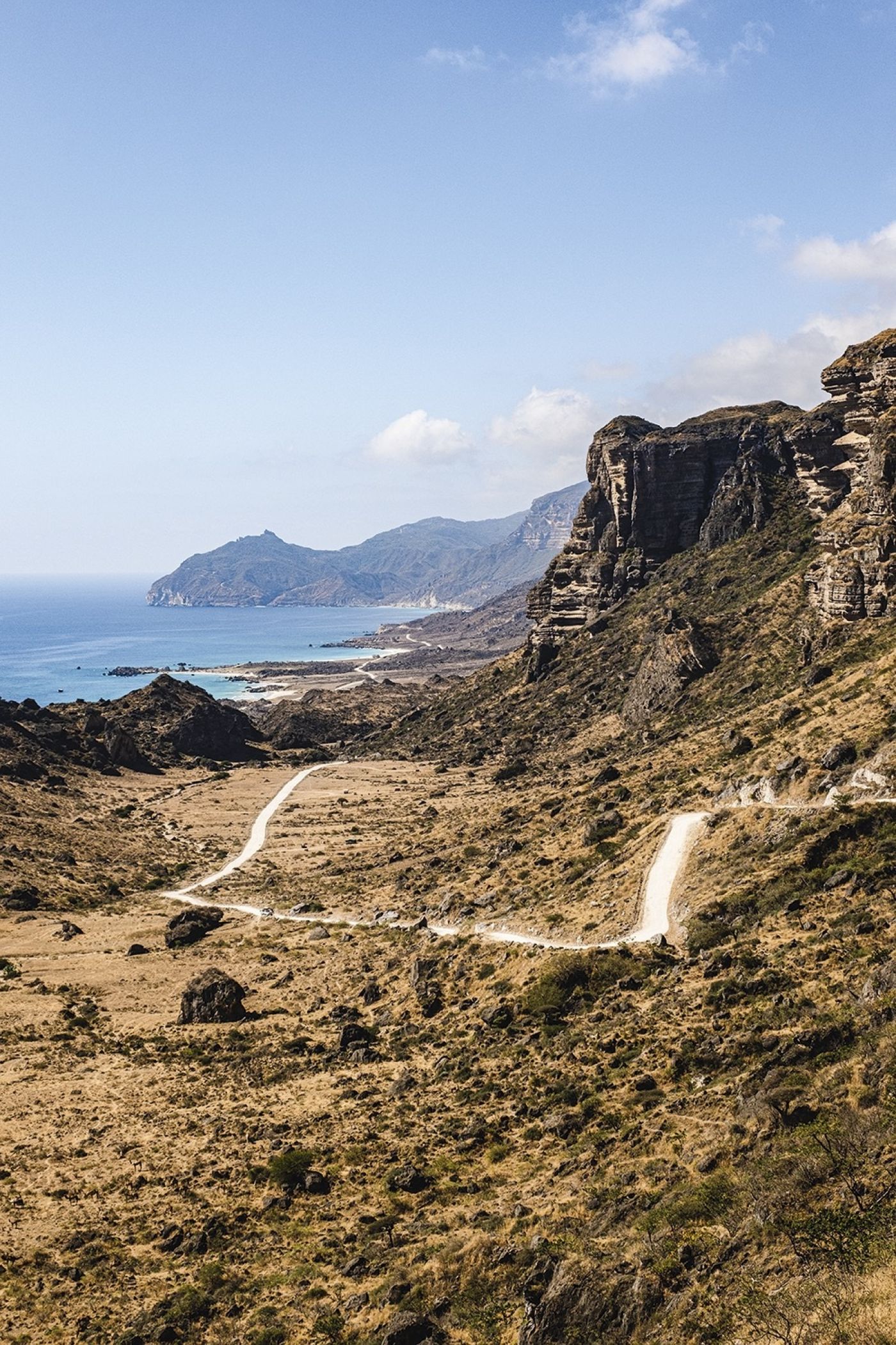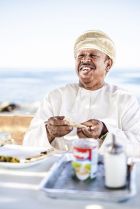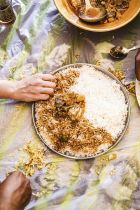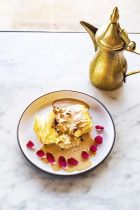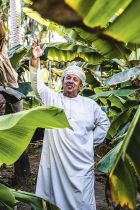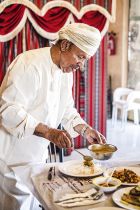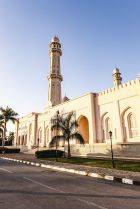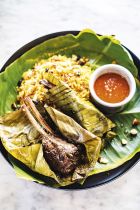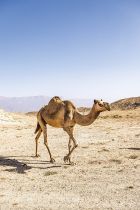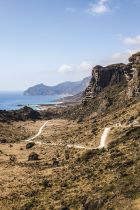
Food and Travel Review
Sitting under the awning of Wadi Darbat Café, licking the remnants of honey and cream cheese fateera flatbreads from sticky fingers, you can almost see why Dhofari food slips under the radar. The cafe’s sign in curling Arabic script is beautifully impenetrable, its picnic chairs and plastic tables aren’t set up to draw attention and its dripping, ripped and hand-eaten breads are hardly haute cuisine. But in Salalah great food doesn’t mean grand surroundings: walls are very much optional.
Getting to know Salalah’s gastronomy takes a little work and it seems few are willing to undertake it. ‘People just don’t know what Oman has. They think it’s a desert so there’s no food,’ explains Ali Al-Shahri, a Salalah farmer and guide. ‘You see tourists bringing burger boxes from hotels and I’m really sad for them.’
It isn’t just the palate-prejudiced tourists, either. One three-Michelin-starred chef visiting Salalah for Al Baleed Resort’s food festival laughingly stated, ‘You can’t be influenced by Omani cuisine because Oman has no cuisine.’ A week in Salalah’s coastal region proves him wrong. It’s a lush, culinary cascade that begins with a nibble of tawa bread and ends in a desperate effort to stock up on condensed camel milk before your flight leaves.
Salalah is Oman’s second city, buried deep on the south coast just 100km from Yemen. Synonymous with the wider coastal region, a shard-lined landscape the colour of pewter and persimmon, Salalah was once an indispensable port on the silk, spice and frankincense routes. Now it’s known only by a handful for seafood, frankincense, camels and the khareef monsoon.
The khareef sets Salalah apart from the rest of Oman. Come June, the near-desolate Dhofar region is nourished with tropical rains that paint Salalah’s peaks and fields green. With the monsoon comes enviable crops, for while northern Oman grows dates, Salalah bursts with the likes of coconut, banana and papaya. Known as the Garden City, it’s replete with fresh produce, the streets lined with farms and fruit stalls where you’ll be able to prise apart rubied pomegranates and sink teeth into soft figs.
They say you can taste the monsoon season in the fish too. It’s what makes Salalah’s seafood some of the best in the Middle East; firmer, sweeter, richer flesh, fattened up on nutrients washed in by warm summer rains. ‘During the monsoon season you get the best tasting fish,’ explains Raid Jouhar, a local Mirbat guide. ‘People from Mirbat, the person who is eating fish every single day, will definitely notice the difference.’
Just east of Salalah city, Mirbat was once a heaving port and pirate haunt, exporting frankincense and Arabian horses. Today, backed by a vast mountain shelf and crumbling old town walls, its small, salt-scented bay doesn’t look particularly plentiful, but the breadth of seafood here is extraordinary. Its fish market is stuffed with unfamiliar, glistening fish with unrecognisable names: tamkry, hamur, shaari, shatrook. Their meat is dense, mackerel-like in mouthfeel, ideal for withstanding simmering curries. Every season brings another speciality: spring lobster, summer squid, winter abalone, and the finest octopus in autumn. The octopus caught here – great tentacled garlands that coil and swing as they’re brought in – is butter-soft, sweet and utterly succulent.
Fishing is done almost entirely by traditional line methods, balanced in small motorised dhow that bounce on winds and waves. On board, fisherman Qais Alyatia chops and hooks sardines into bait, dark blood running over the wooden seat of the boat. The process is efficiently rudimentary, the line anchored around a Styrofoam brick. Below the seat, a wooden rolling pin awaits trickier customers.
hook is sent out. Raid and Qais work as quickly as they talk – a spiel of swift-spoken Jebali dialect. While black-faced gulls shriek like schoolchildren over the surf, the two men bend mussar-wrapped heads together, familiarity pouring forth. It’s one of the more prevalent aspects of Salalah culture – the men love to gossip.
Up the slippery banks to shore sits Mirbat’s Mishkak stall: an unpretentious giant on the dining scene. The stall opens at lunch, which is the main meal of Oman – dinner tends to be a home, often takeaway, affair – to serve up the spiced meat skewers. Everywhere, cars are constantly pulling up to place their orders and the operation here is fine-tuned to perfection. One man turns the skewers, fat and marinade dripping off the smoky beef on to ashen coals, while two others pull open soft steaming pittas and cap pots of dark, unguent sauce. The sauce is why the entire Dhofar region comes to sit in this humidity, TV on and teeth busy. Made with tamarind, black pepper and chilli, it’s incredibly rich, fiery and tangy enough to make your cheeks twitch.
Mishkak, like most of Oman’s cuisine, is an import: a culinary pin from its long history as a centre and subjugator of the Spice Route. In the late 1600s, Oman spread its coastal empire down Africa’s eastern flank and north-east towards Iran and Pakistan. Mishkak was introduced from Zanzibar, whose culinary influences are unique to Salalah since it is the only place in Oman where Zanzibari ingredients like coconut can grow.
The meat is first marinated in ‘Omani spice’. It’s a term that crops up prolifically but is wholly nebulous; a changeable, evolutionary thing that alters with each household. At its base are the Spice Route stars that forever changed Oman’s cuisine: cloves, cardamom, cinnamon, star anise and black pepper. Their perfectly balanced use of this spice sets Salalah’s food apart. It’s remarkably delicate yet complex, like the waft of a spice trader passing through. The cuisine is basically a lesson in fragrance sensitivity.
It’s also an education in camel. Salalah is known for its meat and milk, and these odd, ungainly creatures are farmed with surprising insouciance. Released in the morning from valley pens, they’re left to roam until they decide to come back themselves. The result is that camels litter Salalah’s landscape, turning up unbalanced on cliffsides, sauntering along on highways, even swimming in the sea by Elysian beaches. Keeping them as a kind of strange, edible pet is an expensive labour of love but one that Salalah has doggedly kept in its culture for centuries.
Camel stars in Dhofar’s best dishes, some of which are regional to the point of secrecy. Try ordering ma’ajeen as a foreigner and you’ll see welcoming smiles momentarily falter in surprise. Salalah’s prime restaurants sit like satellites around the city’s shop-filled centre, each owning a speciality. For ma’ajeen, it’s Wadi Al Mughsayl Restaurant, an inconspicuous pit stop to the west, where silver platters pour from the kitchen.
The curiosity to try this locally-loved food is much easier to muster when not looking at it. Ma’ajeen is quite possibly the world’s ugliest dish: a family-sized mound of small carob-coloured chunks liberally flecked with snow-white clumps. It is, in fact, airdried camel meat, turned black with age and tossed in hump lard. It was originally a meal for nomads, a way to make meat last months on the long desert journeys. Necessity is no longer a reason for it to exist, however, and the fact it still does is somewhat reassuring, as pittas and hard, round kak breads are heaped with hump-smothered meat. And it’s delicious – the camel is softer and smokier than biltong without the slap of salt, and the cold flecks of lard are entirely textural, adding an interesting fluffy garnish. It’s a dish born of bitter nights and hard Dhofar journeys, but it remains on the modern menu for good lip-smacking reason.
What ma’ajeen lacks in spectacle, madhbi makes up for. Its modern version can be found at Ittin, a row of numbered restaurants in the city’s north, but traditionally madhbi belongs to the Bedouin and mountainous Jebali people. Stones from a wadi (dry riverbed) are cleaned and then heated over a fire, before salted meat – more often than not camel – is cooked directly atop. The porous stones leach away moisture, letting the camel strips char and caramelise beautifully.
Madhbi is entirely social; a weekend ritual that retains a sense of tribe. It’s eaten in a circle with ghee-doused rice and hot tea as the aroma of smoke fills the valley floor. Tea is essential and Jebali people travel with extensive tea sets at all times, in the off-chance they pass a friend on the road and fancy pulling over for a cup. For locals, cooking, eating and communing in Salalah’s landscape of moon rifts and sharp valleys is the equivalent of popping into a café.
‘The most important thing for us in the morning is tea,’ Ali explains as he lifts a pot from the stones. ‘It’s called “the wine of Salalah”. A big glass of it keeps my head well. We have normal tea but we also love other kinds – tea with ginger, tea with za’atar. We make it together, in the middle of nowhere when we are under the trees, under the mountains.’
‘Normal tea’, as he deems it, is karak; a sweet, milky, spiced brew that goes particularly well with laminated tawa flatbreads. While Muscat social life centres on kahwa coffee and dates, tea and flatbreads rule Salalah’s tables, whether at the male-dominated markets and cafés or the female spaces at home.
Tawa is one of the innumerable breads that form Salalah’s gastronomic backbone. There are great nigella-speckled rounds, flattened rectangles blossoming with brown griddle spots, soft-scented pancakes and hard biscuit-like bakes. The most popular is kak, a huge crusty circle that sits somewhere between bread and crackers. In the coastal town of Hasik, Bashara Shareet Mubrok has become the go-to kak baker, sending her loaves down the splintered coastline.
The kak begins in the home, where Bashara sits with the womenfolk and rolls the three- to four-hour risen dough into circles before taking them to the outdoor tnaar oven. Already 30C outside, the ferocious tnaar spikes the temperature into the unreasonable, but Bashara bakes, unbothered, in black robes and lifah scarf, leaning into the deep fire formed in the ground. She presses the dimpled dough to the clay walls, leaving it there to blister for an hour. The dough is hard and sweet, the nigella delicate, and dips perfectly into qabuli curries, eaten with hands on her matted floor. There’s a definite trick to scooping up sauce sodden rice and fish in one’s hand. A palm scrunch and thumb flick into your mouth that every Omani has mastered, but leaves foreigners clumsy and curry-coated.
In Taqah town, a short drive east from Salalah city, Om Ayman’s hellishly hot kitchen is known across Oman as a specialist in Dhofari cuisine. The eponymous owner runs the red-tapestried restaurant with her husband, overseeing feasts of spice and seafood. Flashfried dry curries with meaty prawns, soft cuttlefish with just the right bite, and impeccably salted fish that pairs brilliantly with chatni, a sauce that leaves a little fire in its wake.
For sweets, there’s delectable lahooh cardamom pancakes and lukemat, a doughnut that’s unfathomably good. Smooth spheres of soft, yeast-fragrant dough with a crack-hard shell that’s lathered and bathed in honey, saffron and sugar: stopping at one is impossible.
Although Salalah’s food scene thrives in cafés and at roadsides, high-end restaurants are starting to showcase the cuisine. In Mirbat, Alila resort’s The Orchard has a brilliant menu charting the steady march of the Frankincense Route and its influence over the years.
‘I have travelled all over Oman, going to each and every village,’ explains chef Prakash Sundaram. ‘I saw how and what they’re eating, what ingredients they’re getting, how the cuisine was formed… Then I came here. Salalah has so many things – the Al-shifa honey from the mountains here is the best and ghee made from goats’ milk is very local to this region. Then there’s a lot of fusion too, coming from India and Zanzibar.’
Starting with original Omani dishes like dried tuna awal salad, the menu travels through Yemen with fahsa stew, here made with fallapart camel meat, Egyptian bessara dip, and Mediterranean pasta. It finishes with its namesake – a delightful frankincense ice cream that keeps the famous local resin light but present.
Salalah’s monopoly on frankincense changed its cuisine. Dhofar’s valleys are packed with the resin-rich boswellia trees, which scent Salalah homes and flavour water and honey-laced teas. Salalah remains one of the only places on earth to grow this ‘white gold’, and the only place to do it so well. As its frankincense trade grew, so too did the influx of people and the spices and ingredients making their way into Salalah kitchens.
‘What’s brilliant about Salalah is the diversity, from the mountains
to the beaches,’ states Dina Macki, a London-based Omani chef cooking at Al-Baleed’s food festival. ‘You can walk a mile and you’re in a whole different place and the food reflects that.'
Dina understands better than any the understated brilliance of this food. It shines in her festival dish of coconut and cardamom beignets with dried lime and tuna, loomi black lime and rose fizz, and unparalleled camel mishkak topped with kumquat and tamarind. It’s the essence of Salalah: an influence-laden plate charting trade winds and wadis.
‘It’s important to understand Omani food isn’t one particular cuisine,’ she continues, serving up much-appreciated seconds. ‘The country is built on myriad cultures and people and our food’s the same. Our dishes make up East Africa, Portugal, India, South Iran, Pakistan, Iraq and the Middle East. And instead of defining what Omani food should be, we’ve simply allowed all these cultures that were brought to us to form what Omani food is.’
Words by Jo Davey. Photography by Karolina Wiercigroch.
Jo Davey and Karolina Wiercigroch travelled to Salalah courtesy
of Experience Oman. experienceoman.om
Where to stay
Al Baleed Resort Salalah by Anantara This labyrinthine resort in Salalah city has a private beach, an infinity pool, spa facilities and three restaurants. Rooms range from large luxury doubles to massive villas with their own pools and kitchens. Doubles from £350. Al Mansurah Street, Al Baleed, Salalah, 00 968 2322 8222, anantara.com
Alila Hinu Bay One of two Omani resorts in Alila’s catalogue, this secluded, sprawling stay outside Mirbat has made the desert part of its design. Plush rooms and villas overlook beaches and lagoons, with a spa, pools and restaurants with terraces including The Orchard and SeaSalt. Doubles from £225. Mirbat, 00 968 2337 3300, alilahotels.com
Belad Bont In the city’s west, Belad Bont is a four-star hotel ideal for families, with a spa and extensive pool. Its large modern apartments come with cooking and catering facilities. Doubles from £45. Al Iman Ali Bin Abi Taleb St, Salalah, 00 968 2323 0000, beladbont.com
Travel Information
The rugged Salalah region is located in the Dhofar province in south-west Oman. Fronted by the Arabian Sea, with hundreds of km of coastline, it has a mountainous interior full of pools, falls and wadis. Currency is the Omani Rial and time is four hours ahead of GMT. Connecting flights to Salalah via the capital, Muscat, take upwards of 10 hours 20 minutes.
GETTING AROUND
Getting around requires a car. Hire one directly at Salalah Airport or, better yet, opt for an English-speaking guide, such as local farmer and guide Ali Al-Shahri, who is a font of knowledge and can show you home experiences and behind-the-scenes Salalah. salalahsafaritours.com
GETTING THERE
Oman Air offer connecting flights via Muscat International Airport from London Heathrow to Salalah International Airport, a 20-minute drive to the centre. https://www.omanair.com/gbl/en Etihad Airways fly from Heathrow to Salalah via Abu Dhabi. https://www.etihad.com/en-gb/
RESOURCES
Experience Oman is the national tourism board and your guide to help discover Salalah and the wider Dhofar area. experienceoman.om
Where to eat
Prices are per person for lunch with breads, excluding drinks, unless stated
Al-Marnife Restaurant Perched on the edge of the cliffside with incredible views, this is a perfect stop when visiting Salalah’s southern beaches. Drive alongside the beach to reach the café at the roundabout. Order kahwa coffee, a massive plate of velvety hummus and their recommended flatbread. From £8. Al-Mughsail
Al-Mina Across the road from Mirbat’s fish market and behind the petrol station is the thriving port café. You can buy fish from the market and have it cooked here, if you like, served with karak tea, looking out across the water. From £12. Near the fish market, Mirbat
Bin Ateeq Famed for its dedication to Omani cuisine, Bin Ateeq’s private, cushioned dining rooms hold a run-down charm. Make sure to try tharid, a dish of flatbread soaked in warming, spiced milk. Dinner with three sharing dishes, £15pp. 23rd July St, Salalah, 00 968 2329 2384
Mishkak stall Located on the western side of Mirbat’s harbour, you can’t miss this large tent fronted by cars and billowing smoke serving fragrant, spiced meat skewers. Join the seated locals or find a spot on the harbour wall — you’ll want extra tamarind sauce. From £2. Mirbat harbour
Om Ayman Along Taqah’s 49 Road heading east, look out for Om Ayman’s brown and white sign where you’ll find Dhofari cuisine in a relaxed setting. Pick fried fish, chatni sauce, lahooh pancakes and the unbeatable lukemat doughnuts. From £5. 49 Road, Taqah, 00 968 9908 4349
The Orchard Alila’s flagship restaurant has a range of incredibly researched and crafted dishes based off the trading routes that once passed through Oman. Opt for the Frankincense menu and eat outside under the stars. Five-course Frankincense menu, £60pp. Mirbat, 00 968 2337 3399, alilahotels.com
Sakalan Al-Baleed Resort’s swanky restaurant serves a range of cuisines, but its Friday Omani buffet night is best, where individual chefs prepare local and national dishes to order. Buffet including unlimited dishes from £34.50pp. Al Mansurah Street, Al Baleed, Salalah, 00 968 2322 8222, anantara.com
Wadi Darbat Café This riverside café does a roaring trade in fateera. Make sure to stop by on your visit to Wadi Darbat’s stunning waterfalls. From £5. Top end the road, Wadi Darbat, Ghaday
Food Glossary
- Bessara
- An Egyptian dip made with fava beans, herbs, garlic and onion
- Chatni
- Spicy chilli sauce
- Ghee
- Clarified butter used to enrich dishes, commonly drizzled on rice or used as a dip
- Fahsa
- Yemeni stew traditionally made with lamb
- Fateera
- Flatbread commonly stuffed with cream cheese and drizzled with honey
- Kahwa
- Arabic coffee with cardamom served without sugar or milk, often accompanied by dates or Omani halva
- Kak
- A round hard bread made with nigella seeds
- Karak
- Sweet tea made with milk, sugar and spice, most commonly cardamom
- Lahooh
- Cardamom-infused pancake
- Loomi
- Black lime – a Spice Route citrus that’s brined, dried and powdered
- Lukemat
- Round, crispy-coated doughnuts tossed in saffron, honey and sugar syrup
- Ma’ajeen
- Dhofari nomad dish of air-dried camel tossed in hump lard
- Madhbi
- Traditional stone barbecue from Dhofar’s mountainous regions
- Mishkak
- Skewers of spiced meat that are grilled and served with a tangy tamarind and black pepper sauce
- Qabuli
- Curry often made with Omani spices, meat and rice
- Tawa
- Ubiquitous laminated flatbread eaten at many meals but popular for breakfast
- Za’atar
- Wild Middle Eastern thyme that has a more floral hint than western thyme (also the name given to various spice blends from the region)
Get Premium access to all the latest content online
Subscribe and view full print editions online... Subscribe

